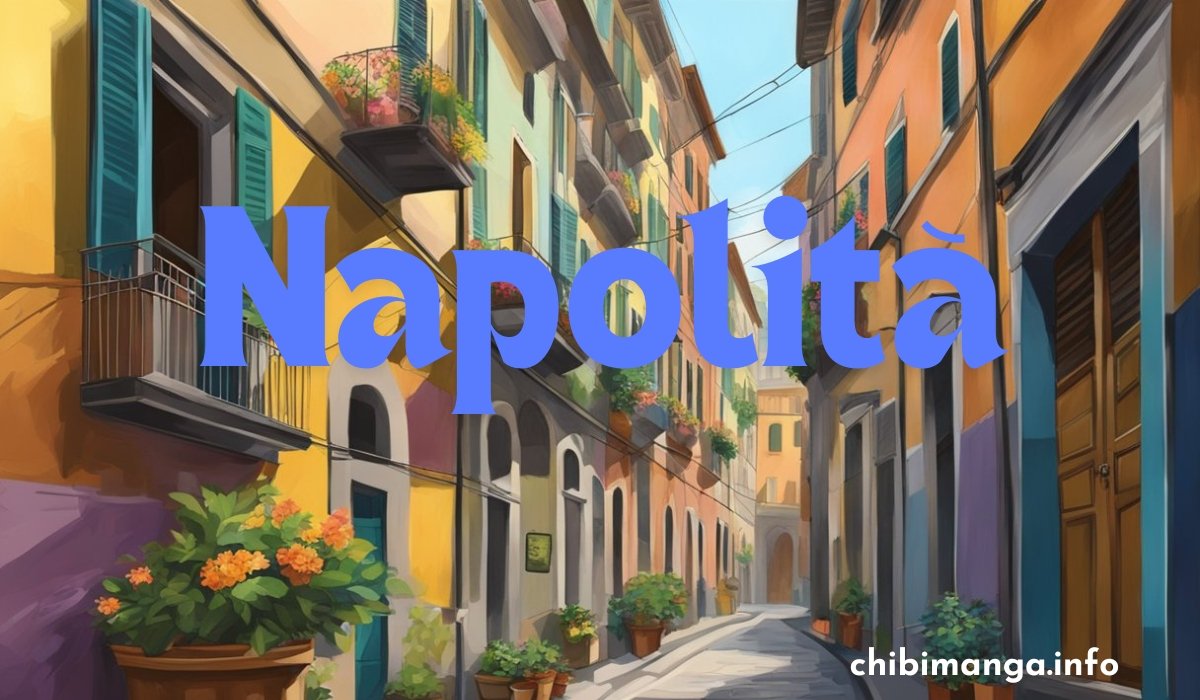In the rich tapestry of languages spoken around the world, Neapolitan, or Napolità, holds a unique and treasured place. Whether you are a language enthusiast or an admirer of Italian culture, understanding Napolità opens a window to a fascinating world steeped in history, tradition, and distinct linguistic flavor. Let’s take a deep dive into the Neapolitan language, exploring its roots, current status, and the cultural significance that makes it so vital to the Southern Italian identity.
Introduction Napolità
Neapolitan, or Napolità, is far more than just a dialect of Italian. It is a Romance language with a vibrant history and a cultural legacy that traces back to the ancient Kingdom of Naples. Spoken predominantly in Southern Italy, Napolità is a testament to the region’s rich historical narrative and unique cultural identity. This blog post aims to provide a comprehensive overview of the Neapolitan language, its distribution, classification within the Romance languages, current status, and its relationship with standard Italian. By the end of this article, you’ll have a newfound appreciation for Napolità and its enduring influence on the linguistic landscape of Italy.
Geographic Distribution
Napolità’s heartland is Naples, a city renowned for its historical significance, vibrant street life, and culinary delights. However, the reach of the Neapolitan language extends beyond Naples, encompassing most of continental Southern Italy. Regions like Campania, Calabria, Apulia, Basilicata, and parts of Lazio are home to fluent speakers of Napolità, each adding their local flavor to the linguistic mosaic. In addition to these primary regions, minority communities in other parts of Italy and even abroad continue to speak Napolità, ensuring that the language maintains a presence far beyond its traditional borders. These diaspora communities, found in countries like the United States, Canada, Argentina, and Australia, help keep the language alive across generations, contributing to its resilience and adaptability.
Classification
Napolità belongs to the Italo-Romance group within the broader family of Romance languages, positioning it alongside other major languages such as Italian, French, Spanish, and Portuguese. This classification underscores the common Latin roots shared by these languages, while also highlighting the unique evolutionary path Napolità has taken. Unlike Standard Italian, which has been heavily influenced by Tuscan dialects and subject to significant standardization, Napolità has retained many archaic features and developed its own distinct phonetic, morphological, and syntactic characteristics. This divergence is a testament to the rich tapestry of influences that have shaped Napolità over the centuries, including Norman, Spanish, and Arabic elements.
Current Status
The status of Napolità as a language of cultural and historical importance is undeniable, yet its legal recognition and protection remain complex and varied. While Napolità is not officially recognized as a national language of Italy, it enjoys a degree of legal protection and promotion at the regional level. Efforts to preserve and promote the language are ongoing, driven by cultural organizations, local governments, and passionate individuals who recognize the importance of maintaining this linguistic heritage. Initiatives such as language courses, literature publications, and digital media content in Napolità are crucial in ensuring that the language continues to thrive in the modern era. Despite these efforts, Napolità faces challenges in terms of intergenerational transmission, with younger generations increasingly adopting Standard Italian and English in their daily lives.
Relationship with Italian
The relationship between Napolità and Standard Italian is a fascinating study in linguistic divergence and convergence. While the two languages share a significant amount of vocabulary due to their common Latin ancestry, there are substantial differences in pronunciation, grammar, and syntax that set them apart. For instance, Napolità often exhibits a more melodic intonation, with vowel sounds that differ markedly from those in Standard Italian. Additionally, certain grammatical structures and idiomatic expressions in Napolità have no direct equivalents in Standard Italian, making the two languages mutually intelligible to varying degrees depending on the speaker’s exposure and familiarity with both. This linguistic interplay highlights the dynamic nature of language evolution and the cultural factors that influence it.
The Cultural Significance of Napolità
Napolità is not just a means of communication; it is a living repository of Southern Italian culture, history, and identity. The language is deeply embedded in the region’s music, literature, and folklore, serving as a vehicle for expressing the unique worldview and experiences of the Neapolitan people. Traditional songs like “O Sole Mio” and “Funiculì Funiculà” are testaments to the lyrical beauty and emotional depth of Napolità. In literature, authors such as Eduardo De Filippo and Raffaele Viviani have used the language to capture the essence of Neapolitan life, creating works that resonate with authenticity and local color. Folklore, too, is rich with tales and proverbs in Napolità, reflecting the wisdom and wit of generations past.
Preservation Efforts and Modern Adaptations
In recent years, there has been a growing movement to preserve and revitalize the Neapolitan language, driven by both grassroots initiatives and institutional support. Language courses offered by cultural associations and universities aim to teach Napolità to new generations, ensuring that the language remains a vibrant part of the regional identity. Digital platforms and social media have also become important tools for promoting Napolità, with online communities and content creators using these channels to share lessons, stories, and cultural insights. In addition to preservation efforts, there are modern adaptations of Napolità in various forms of media, from music and film to theater and literature. Contemporary artists and writers are finding innovative ways to incorporate Napolità into their works, bridging the gap between tradition and modernity.
The Challenges Facing Napolità
Despite the numerous efforts to preserve and promote Napolità, the language faces significant challenges in the modern world. One of the primary obstacles is the dominance of Standard Italian and English, particularly among younger generations. This linguistic shift is driven by factors such as education, media consumption, and globalization, which have led to a decline in the everyday use of Napolità. Additionally, there is a lack of comprehensive institutional support for the language, with limited funding and resources allocated to its preservation and promotion. Addressing these challenges requires a concerted effort from all stakeholders, including government agencies, educational institutions, cultural organizations, and the Neapolitan community itself.
The Future of Napolità
The future of Napolità depends on the continued dedication and passion of those who recognize its value and are committed to its preservation. By promoting the language through education, media, and cultural initiatives, it is possible to ensure that Napolità remains a living, breathing part of Southern Italy’s cultural heritage. Encouraging younger generations to learn and use Napolità is crucial, as they are the key to the language’s survival and evolution. Additionally, fostering a sense of pride and appreciation for Napolità within the broader Italian and global context can help to elevate its status and secure its place in the linguistic landscape of the future.
YOU MAY ALSO LIKE
Discover the Green Miracle Grenblis and Its Surprising Benefits
Conclusion
In conclusion, the Neapolitan language, or Napolità, is a rich and vibrant part of Southern Italy’s cultural heritage. Its unique linguistic features, historical significance, and cultural expressions make it a fascinating subject for language enthusiasts and Italian culture admirers. While Napolità faces challenges in the modern world, the ongoing efforts to preserve and promote the language are a testament to its enduring value and importance. By understanding and appreciating Napolità, we can contribute to its preservation and ensure that it remains a vital part of our shared cultural heritage. If you’re interested in learning more about Napolità or getting involved in preservation efforts, consider reaching out to local cultural organizations, enrolling in a language course, or joining online communities dedicated to the Neapolitan language and culture. Together, we can help keep the spirit of Napolità alive for future generations.
Additional Resources
For those interested in exploring further, here are some resources and organizations dedicated to the preservation and promotion of the Neapolitan language:
- Accademia Napulitana ([link])
- Istituto Campano per la Storia della Resistenza ([link])
- Neapolitan Language and Culture Courses ([link])
- Online Communities and Forums ([link])
By engaging with these resources and participating in the ongoing conversation about Napolità, you can deepen your understanding of this unique language and contribute to its vibrant future. Thank you for joining us on this exploration of the Neapolitan language, and we hope you continue to discover and celebrate the rich linguistic and cultural heritage of Southern Italy.
Frequently Asked Questions (FAQs)
- What is the origin of the Neapolitan language (Napolità)?
- Napolità originated in the Southern Italian region around Naples and traces back to Latin influences, acquiring unique phonetic and grammatical characteristics over time.
- How is Napolità different from Standard Italian?
- Napolità differs significantly from Standard Italian in vocabulary, syntax, and pronunciation. These differences reflect the distinct historical and cultural influences on the region.
- What efforts are being made to preserve the Neapolitan language?
- Efforts include language courses offered by cultural associations and universities, digital platforms promoting Napolità, and contemporary artists incorporating the language into their works.
- Why is the Neapolitan language important in Southern Italy’s culture?
- Napolità captures the unique worldview, experiences, and traditions of the Neapolitan people, enriching regional music, literature, and folklore.
- What challenges does the Neapolitan language face today?
- Challenges include the dominance of Standard Italian and English, especially among younger generations, and a lack of comprehensive institutional support and funding for preservation efforts.










